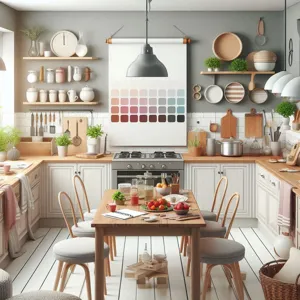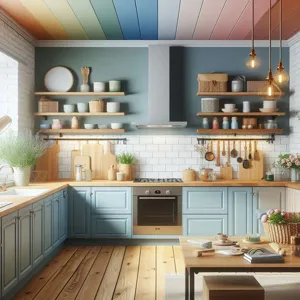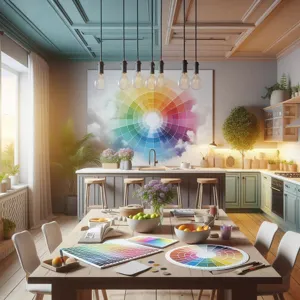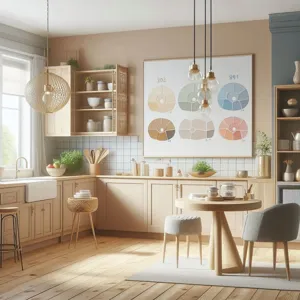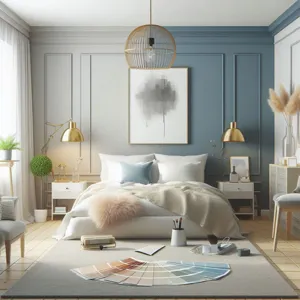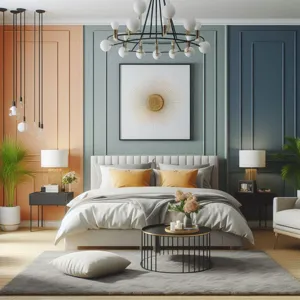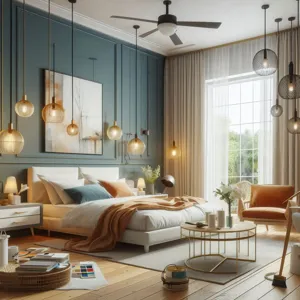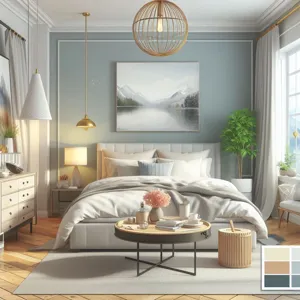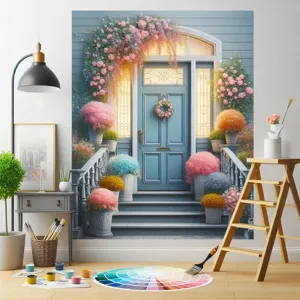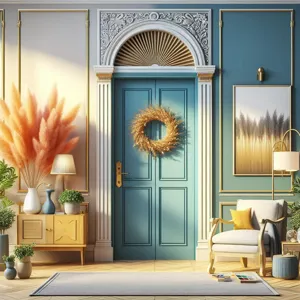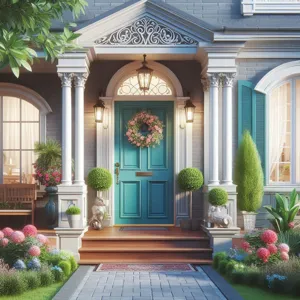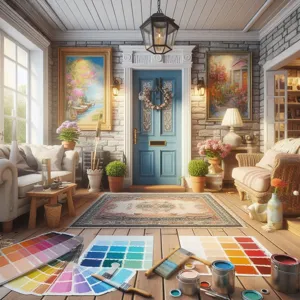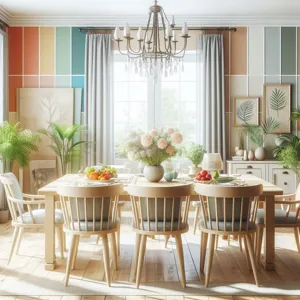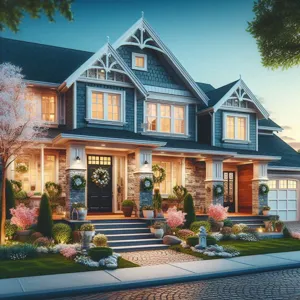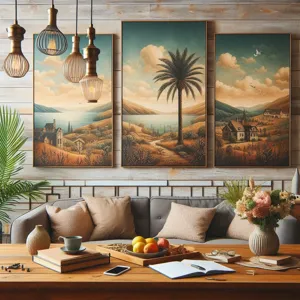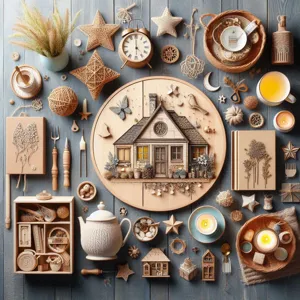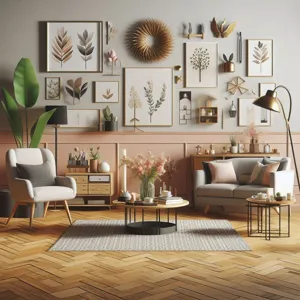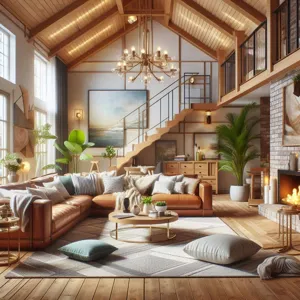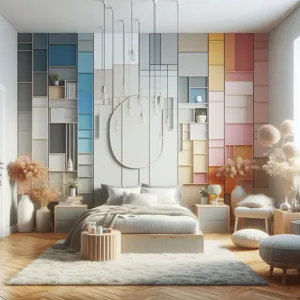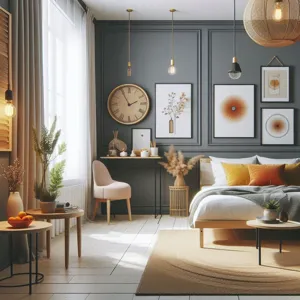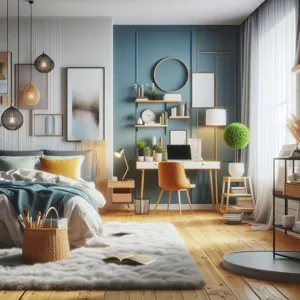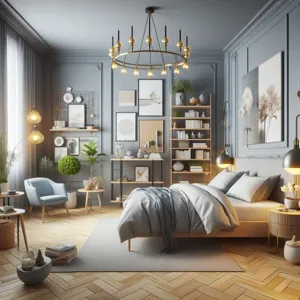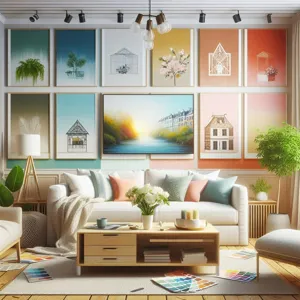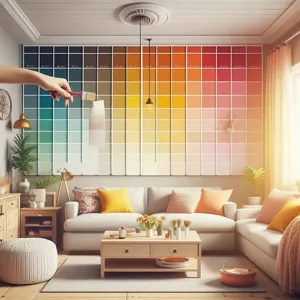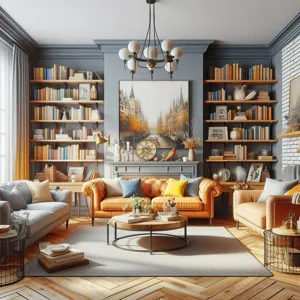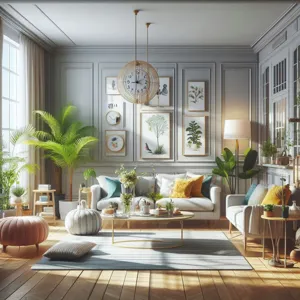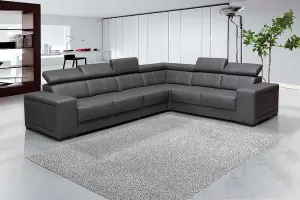When it comes to selecting a new car, the color often plays a significant role in the decision-making process.
Beyond mere aesthetics, the psychology of car colors taps into our emotions, identities, and even perceptions of safety and style. Each hue carries its own connotations—bold red exudes energy and passion, while a sleek black might evoke sophistication and power. As you embark on the journey of choosing the perfect color for your ride, understanding the psychological impact of these shades can elevate your choice from merely practical to profoundly personal. In this blog post, we’ll delve into the fascinating world of car color psychology, explore how different colors can influence your mood and image, and provide you with insights to help you select a hue that not only reflects your personality but also enhances your driving experience. Whether you’re a fan of timeless neutrals or vibrant pops of color, this guide will empower you to make a choice that resonates with you on multiple levels.
1. Introduction to Car Color Psychology

Choosing the color of your car goes beyond mere aesthetics; it delves into the fascinating realm of psychology and personal expression. The hue you select can convey your personality, influence how others perceive you, and even impact the resale value of your vehicle. Car color psychology is a nuanced field that explores the emotional and cultural associations tied to various shades, helping buyers make informed choices that resonate with their identity and lifestyle.
For many, a car is more than just a mode of transportation; it’s a reflection of who they are. Whether it’s the sleek sophistication of a black sedan, the boldness of a fiery red sports car, or the calming presence of a serene blue hatchback, each color evokes specific feelings and attitudes. Research has shown that colors can trigger emotional responses, with warmer shades often associated with energy and passion, while cooler tones promote tranquility and trust.
Moreover, cultural perceptions play a significant role in color preference. For instance, in some cultures, white symbolizes purity and new beginnings, making it a popular choice for new car buyers. In contrast, in other regions, it may be viewed as a color associated with mourning. Understanding these cultural nuances can help you choose a color that not only suits your taste but also resonates positively within your community.
As we dive deeper into the world of car color psychology, we’ll explore the meanings behind different colors, their popularity trends, and practical tips on how to select the perfect hue that aligns with your personality and lifestyle. By the end of this journey, you’ll be equipped with the knowledge to make a car color choice that truly reflects who you are—inside and out.
2. The Impact of Color on Perception and Emotion
When it comes to car colors, the impact goes far beyond mere aesthetics; it delves deep into the realms of perception and emotion. The color of a vehicle plays a pivotal role in how it is perceived by others and how it makes its owner feel while driving. This psychological connection can influence everything from purchase decisions to the way drivers interact with the world around them.
For instance, red is often associated with passion, energy, and excitement. A red car can evoke a sense of speed and adventure, making it an appealing choice for those who crave a thrilling driving experience. On the other hand, blue is frequently linked to calmness and reliability. A blue vehicle can create an impression of trustworthiness, making it an ideal choice for professionals looking to project stability and confidence.
Moreover, the psychological effects of color can influence a car owner’s mood and self-perception. Bright colors like yellow and orange can induce feelings of happiness and positivity, while darker shades like black or navy may convey sophistication and authority. This emotional resonance can make a significant difference in how drivers feel about their car, and by extension, themselves.
Understanding how color impacts perception and emotion can help potential car buyers make more informed choices. Whether you’re seeking to stand out on the road or hoping to exude a sense of professionalism, the color of your car is an essential factor that deserves careful consideration. By selecting a hue that aligns with your personality and desired image, you can ensure that your ride not only looks great but also resonates on a deeper emotional level.
3. Popular Car Colors and Their Meanings

When it comes to selecting the perfect hue for your vehicle, understanding the psychological implications of color can significantly influence your choice. Popular car colors not only reflect personal style but also convey messages about the driver’s personality and preferences. Here’s a closer look at some of the most common car colors and their inherent meanings:
**1. Black:** Often associated with sophistication and elegance, black is a classic choice that exudes power and authority. It can also signify a sense of mystery and is often chosen by those who wish to convey a strong, professional image. However, it can also imply a desire for anonymity, making it a popular choice for business vehicles.
**2. White:** Representing purity, simplicity, and cleanliness, white cars are often seen as timeless and practical. This color is commonly associated with safety and reliability, making it a popular choice for families and individuals who prioritize functionality over flashiness. Additionally, white vehicles tend to stay cooler in sunny climates, adding a practical benefit to their aesthetic appeal.
**3. Silver and Gray:** These neutral tones evoke a sense of modernity and technological advancement. Silver and gray cars are often associated with sophistication and a futuristic outlook. They are versatile colors that can suit various vehicle types, from sporty sedans to practical SUVs, appealing to those who appreciate minimalism and understated elegance.
**4. Red:** Vibrant and attention-grabbing, red is the color of passion, excitement, and energy. It tends to attract attention and can indicate a more adventurous or bold personality. Red cars are often linked to a sense of speed and performance, making them a favorite among sports car enthusiasts. However, they might also be perceived as aggressive, so consider your audience when opting for this daring hue.
**5. Blue:** Often linked to calmness and tranquility, blue is a popular choice that can convey a sense of reliability and trustworthiness. Light blues are associated with peace and serenity, while darker shades may evoke professionalism and stability. Choosing blue can reflect a balanced personality and a preference for harmony.
**6. Green:** Green is often associated with nature, growth, and sustainability. It can convey a sense of uniqueness and individuality, as it’s less commonly chosen than other colors. Opting for a green car can reflect a connection to eco-friendliness, making it appealing for environmentally conscious consumers.
**7. Yellow and Orange:** These energetic colors are typically seen as fun and playful. They can signify a sunny disposition and an outgoing personality. However, they are also less common, which can make a car in these hues stand out even more, showcasing a driver who is confident and non-conformist.
Choosing the right color for your vehicle goes beyond aesthetics; it taps into the psychology of perception and emotion. Whether you want to project professionalism, excitement, or a commitment to sustainability, consider how your choice of color will influence not just your driving experience, but also how others perceive you on the road.
4. The Influence of Cultural Factors on Color Preferences
When it comes to choosing the perfect hue for your car, cultural factors play a significant role in shaping our color preferences. Colors often hold different meanings and associations across various cultures, influencing how individuals perceive and respond to specific shades. For instance, while white is often associated with purity and simplicity in Western cultures, it can signify mourning and loss in some Eastern societies. This stark contrast can impact an individual’s choice when selecting a vehicle, as the color may evoke different emotions or convey unintended messages.
In countries like China, red is a favored color, symbolizing good fortune and happiness, which can lead to a booming market for red vehicles during festive seasons. On the flip side, in certain regions of Europe, muted colors like grey and navy blue may be preferred, reflecting a more conservative and sophisticated approach to car ownership.
Furthermore, trends can shift with cultural movements; for example, the rise of eco-consciousness has popularized earthy tones and greens as consumers seek to align their personal values with their purchasing decisions. Understanding these cultural nuances can provide valuable insight into not only what colors are trending in various markets but also how specific hues may resonate with potential buyers.
Ultimately, when selecting a car color, it’s essential to consider not just personal taste but also the broader cultural context in which you live. By doing so, you can choose a hue that not only reflects your personality but also aligns with the sentiments and values of your community, ensuring your vehicle makes the right impression on the road.
5. The Connection Between Color and Safety

When it comes to choosing a car color, safety should be at the forefront of your decision-making process. Studies have shown that certain colors can significantly impact visibility on the road, which in turn affects accident rates. Bright and vibrant colors, such as white, yellow, and orange, tend to stand out more against the backdrop of asphalt and can be easier for other drivers to spot, especially in low-light conditions such as dawn, dusk, or during inclement weather.
For instance, a study conducted by the Monash University Accident Research Centre found that vehicles in darker shades—such as black, gray, or navy blue—are more likely to be involved in accidents compared to their brighter counterparts. The reasoning is simple: lighter colors reflect more light and are more noticeable, making them less likely to blend into the surroundings. This is especially important in urban areas where traffic is dense, and visual clutter can obscure a vehicle’s presence.
Furthermore, the psychological aspect of color also plays a role in how drivers perceive safety. Brightly colored cars are often associated with positivity and alertness, which can enhance a driver’s confidence on the road. Conversely, darker colors can evoke a sense of anonymity, which might lead to more aggressive driving behavior, as drivers feel less visible to others.
Ultimately, while personal preference and style are crucial in selecting the perfect hue for your ride, considering the connection between color and safety can provide an added layer of assurance in your choice. By opting for a color that maximizes visibility, you not only enhance your vehicle’s aesthetic appeal but also contribute to a safer driving experience for yourself and others on the road.
6. How Color Affects Resale Value
When it comes to purchasing a vehicle, the color you choose can have a surprising impact on its resale value. While you may love that vibrant shade of electric blue or the sleek allure of matte black, it’s essential to consider how these choices resonate in the broader automotive market. Certain colors tend to hold their value better than others, largely because of buyer preferences and market trends.
Neutral colors like white, black, gray, and silver often dominate the resale market. They are timeless, versatile, and appeal to a larger demographic, making them easier to sell down the line. Buyers often view these colors as safe and practical, which can lead to higher demand and, consequently, better resale prices. For instance, a classic black sedan may attract a wider audience than a bright orange sports car, which could be seen as a niche choice appealing only to specific buyers.
Conversely, bold colors—while they can make a strong personal statement—may not always translate well in terms of resale. A striking color like hot pink or lime green may turn heads on the road, but when it comes time to sell, you might find yourself waiting longer for a buyer who shares your enthusiasm for such a unique hue. These less conventional colors can sometimes be perceived as less desirable, potentially leading to a lower resale value.
Furthermore, trends in car colors can shift over time based on societal influences and preferences. Just as fashion ebbs and flows, so too does the automotive landscape. For example, the rise of eco-conscious buyers has led to an increased popularity of earthy tones and muted shades, which may fetch a better price in the second-hand market.
Ultimately, while color is a personal choice that reflects your style and personality, it’s wise to consider the resale implications. Striking a balance between your preferences and market trends can help ensure that your car not only looks good on the road but also retains its value when it’s time to sell.
7. Choosing a Color Based on Personality Traits

When it comes to selecting the perfect hue for your vehicle, understanding the psychology of color can be a game-changer. Your choice of car color can reflect personal traits, values, and even aspirations. It’s not just about aesthetics; it’s about choosing a shade that resonates with who you are and how you wish to be perceived by the world.
For instance, individuals who gravitate towards bold colors like red or orange often exude confidence and enthusiasm. These vibrant shades are associated with energy and passion, making them ideal for those who view driving as an exhilarating experience. If you’re someone who thrives on excitement and enjoys being the center of attention, a fiery red or a striking neon orange may be the perfect choice for your ride.
In contrast, those who prefer more subdued colors, such as black or gray, might be seen as more serious or sophisticated. These shades convey a sense of elegance and authority, appealing to individuals who value professionalism and a timeless aesthetic. A sleek black car can suggest a powerful presence, making it an excellent option for business professionals aiming to create a strong impression.
If you’re a free spirit who embraces creativity, colors like teal or purple may resonate with you. These hues are often linked to innovation and individuality, attracting those who wish to stand out in a crowd while still maintaining a sense of uniqueness. A car in a vibrant teal or deep plum can reflect an adventurous personality, one that seeks to break free from conventions.
Lastly, for those who cherish calmness and tranquility, softer shades like blue or green can evoke a sense of peace and harmony. These colors are often associated with nature and serenity, appealing to individuals who prioritize comfort and relaxation in their lives. A gentle sky blue or a refreshing mint green can make a statement about your love for simplicity and a balanced lifestyle.
Ultimately, when choosing a color for your car, consider not only your personal preferences but also how you want to express your identity through your vehicle. After all, your car is an extension of who you are, and the right color can enhance your driving experience while making a bold statement on the road.
8. Seasonal Trends in Car Colors
When it comes to choosing the perfect hue for your vehicle, it’s essential to consider seasonal trends in car colors. Just as fashion evolves with the seasons, so too does the automotive color palette. Car manufacturers and consumers alike often gravitate toward hues that resonate with the mood of the time, reflecting broader cultural and environmental shifts.
In the spring and summer months, vibrant colors tend to dominate the roads. Bright reds, sunny yellows, and refreshing greens evoke feelings of energy and optimism, perfectly aligning with the blossoming of nature and the longer, sunnier days. These eye-catching shades not only stand out in the sunlight but also signal a sense of adventure and fun, making them popular choices for new car buyers looking to embrace the season’s spirit.
As autumn approaches, the color trends shift, embracing the rich, warm tones found in nature. Earthy shades like deep oranges, rustic browns, and sophisticated burgundies become prevalent, mirroring the changing leaves and the cozy ambiance of the season. These colors not only blend harmoniously with the fall landscape but also convey a sense of comfort and stability, appealing to those who prefer a more grounded aesthetic.
Winter, on the other hand, ushers in a different set of preferences. cool colors like icy blues, sleek silvers, and classic blacks often dominate the market during this time. These shades reflect the tranquility and elegance of the winter months, while also offering practicality, as they tend to hide dirt and grime during inclement weather. Additionally, the timeless appeal of neutral and metallic colors can give vehicles a sophisticated edge that many buyers seek.
By paying attention to these seasonal shifts, you can not only align your car color choice with current trends but also tap into the psychological impact of color. Whether you want to make a bold statement or exude a sense of calm and reliability, understanding seasonal trends can help you choose a hue that feels just right for your ride—one that you’ll love for years to come.
9. The Role of Color in Branding and Marketing
When it comes to branding and marketing, color plays a pivotal role in shaping perceptions and influencing consumer behavior. Each hue carries its own set of psychological implications that can evoke specific emotions and responses, making color selection an essential aspect of any automotive brand’s identity. For instance, bold and vibrant colors like red and yellow tend to attract attention and convey a sense of excitement, making them ideal for sports cars and performance vehicles. Conversely, cooler tones like blue and green may evoke feelings of tranquility and reliability, appealing to consumers seeking comfort and dependability in family-oriented vehicles.
Automakers strategically leverage color in their marketing campaigns to align with their brand values and target audience. A luxury car brand might opt for sleek, understated shades like black or silver to communicate sophistication and elegance, while a more adventurous brand might embrace brighter, unconventional colors to reflect a sense of freedom and exploration. This careful consideration of color not only contributes to a vehicle’s aesthetic appeal but also reinforces the brand’s message and identity in the minds of potential buyers.
Moreover, color trends in the automotive industry can shift based on cultural influences and societal moods. For example, during times of uncertainty, consumers may gravitate towards neutral and classic colors that symbolize stability. In contrast, periods of optimism may see a rise in demand for bold and expressive hues. By staying attuned to these trends, brands can better position themselves in the market and connect with consumers on a deeper emotional level.
Ultimately, the role of color in branding and marketing transcends mere aesthetics; it is a strategic tool that can significantly impact consumer choices and brand loyalty. When selecting a color for your vehicle, consider not only your personal preferences but also the broader psychological implications that can enhance your car’s appeal and reflect your identity on the road.
10. Customizing Your Car: Beyond Basic Colors
When it comes to personalizing your vehicle, the options extend far beyond the standard palette of basic colors. Customizing your car allows you to express your personality, preferences, and lifestyle in ways that go beyond the conventional. Imagine transforming your ride into a unique reflection of who you are—whether it’s with a vivid matte finish, an iridescent sheen that changes color with the angle of light, or a striking graphic wrap that tells a story.
Customization can also involve nuanced shades that evoke specific emotions or associations. A deep burgundy can convey sophistication and elegance, while a bright electric blue might exude energy and playfulness. For those looking to make a statement, consider bold two-tone combinations or intricate patterns that stand out on the road.
Moreover, customization isn’t solely about color; it encompasses finishes, textures, and designs. Think about adding a sleek carbon fiber accent or a glossy chrome trim to elevate your car’s aesthetic. You could even explore eco-friendly options, such as plant-based paints or custom wraps made from sustainable materials, which not only look good but also reflect a commitment to environmental responsibility.
Beyond aesthetics, remember that certain colors and finishes can influence the perceived value of your vehicle. A well-thought-out custom design can enhance the car’s appeal and possibly increase its resale value.
As you embark on the journey of customizing your car, take the time to explore various options and visualize how each choice resonates with your identity. Your car is not just a mode of transportation; it’s an extension of yourself. So, embrace the opportunity to make it truly yours, transforming it into a masterpiece that turns heads and sparks conversations wherever you go.
11. Maintenance and Longevity of Different Car Colors
When it comes to the maintenance and longevity of car colors, not all hues are created equal. The color you choose for your vehicle can significantly impact not just its appearance, but also the effort and resources needed to keep it looking pristine over time.
For instance, lighter shades like white and silver tend to hide dirt and scratches better than darker colors, making them an appealing choice for those who prefer a low-maintenance option. These hues reflect sunlight effectively, which can help reduce the wear and tear from UV exposure. As a result, they often require less frequent washing and detailing, allowing you to enjoy your vehicle without the constant upkeep.
On the other hand, deep colors such as black or navy blue can be strikingly beautiful but may require more diligence to maintain their luster. These shades are more prone to showing dirt, swirl marks, and scratches, which can be particularly frustrating for owners who want their cars to remain flawless. While a meticulously maintained dark vehicle can be a head-turner, it may also demand more frequent washes and a solid polishing regimen to keep it looking its best.
Additionally, the choice of color can affect how the vehicle withstands the test of time. For example, vibrant colors like bright reds or yellows may fade more quickly under intense sunlight compared to more muted tones. This fading can diminish the car’s resale value and overall aesthetic appeal. Therefore, if longevity is a priority, opting for classic and neutral shades can often yield the best results in terms of maintaining the car’s appearance over the years.
Ultimately, understanding the maintenance demands associated with different car colors allows you to make a more informed decision. By selecting a hue that aligns with your lifestyle and care preferences, you can ensure that your vehicle remains a source of pride for years to come. Whether you opt for a bold statement or a timeless classic, knowing how to care for your choice will enhance both its longevity and your enjoyment of the ride.
12. Tips for Choosing the Right Color for Your Lifestyle
When it comes to selecting the perfect color for your car, it’s essential to consider not just aesthetics, but also how your choice aligns with your lifestyle. The color of your vehicle can reflect your personality, influence your driving experience, and even affect your mood behind the wheel. Here are some tips to help you choose a hue that complements your life.
**1. Assess Your Daily Routine:** If you have a busy lifestyle filled with family outings, work commutes, or outdoor adventures, you might want to choose a color that is practical. Neutral shades like silver, gray, or white are excellent at hiding dirt and scratches, making them ideal for daily use. On the other hand, if you prefer a vibrant lifestyle, consider bold colors like red or blue that can energize your daily drives.
**2. Consider Your Environment:** Think about the climate and surroundings where you live. Dark colors, such as black or deep blue, can absorb heat, making your car warmer in sunny climates. In contrast, lighter colors reflect sunlight and can keep your vehicle cooler. If you live in a rainy area, darker hues may show water spots more prominently, while lighter colors could brighten up gloomy days.
**3. Reflect Your Personality:** Your car color can be an extension of who you are. If you’re adventurous and love to stand out, a striking yellow or electric green may suit you perfectly. For those who prefer a classic and sophisticated look, colors like navy blue, burgundy, or even a sleek charcoal can convey a sense of elegance.
**4. Think Long-Term:** While trendy colors can be enticing, consider how your choice will hold up over time. Classic colors often have better resale value and appeal to a broader audience. Trends can fade, but timeless colors like white, black, and metallic shades tend to remain in demand.
**5. Test It Out:** If you’re torn between a few shades, don’t hesitate to take advantage of digital tools or paint swatches to visualize how they would look on your car. Many manufacturers offer customization options that allow you to see how different colors pair with various finishes, helping you make a more informed decision.
Choosing the right color for your car is not just about aesthetics; it’s about making a statement that resonates with your lifestyle. By considering these factors, you can find a hue that not only looks great but also enhances your driving experience for years to come.
13. The Future of Car Colors: Trends to Watch
As we look ahead to the future of car colors, several intriguing trends are emerging that reflect both technological advancements and shifting consumer preferences. One of the most prominent trends is the rise of **matte finishes** and **textured surfaces**. Once considered a niche option, matte paint has gained significant popularity, offering a sleek, modern aesthetic that stands out on the road. This finish not only enhances the vehicle’s appearance but also allows for unique customization opportunities, enabling owners to express their individuality.
Another trend to keep an eye on is the integration of **smart technology** into car color choices. Imagine vehicles that can change color at the touch of a button or based on environmental conditions. Emerging innovations in **electronic ink** and **thermochromic materials** are paving the way for cars that adapt their hues depending on the driver’s mood, the temperature, or even the time of day. This transformative approach not only allows for personalization but also serves practical purposes, such as improving visibility in low-light conditions or reflecting sunlight to keep the interior cooler.
Sustainability is also shaping the future of car colors. With an increasing emphasis on eco-friendliness, many manufacturers are exploring **natural pigments** and **bio-based paints**. These environmentally conscious options not only reduce the carbon footprint associated with traditional paint processes but also appeal to a growing demographic of consumers who prioritize sustainability in their purchasing decisions.
Lastly, **bold and vibrant colors** are making a comeback, moving away from the conservative palettes of recent years. Shades like electric blue, fiery red, and vibrant green are capturing the attention of younger buyers who seek to make a statement with their vehicles. This trend reflects a broader societal shift towards self-expression and individuality, encouraging car manufacturers to embrace bolder palettes in their offerings.
As we navigate the evolving landscape of automotive design, keeping an eye on these trends will not only help you choose a car that reflects your personal style but also ensure that your vehicle stands out in an increasingly competitive market. The psychology of car colors is not just about aesthetics; it’s about embracing the future of mobility and how it intertwines with our identities on the road.
14. Conclusion: Finding Your Perfect Hue
Choosing the right color for your car is more than just a matter of aesthetics; it’s a reflection of your personality, preferences, and even your lifestyle. As we’ve explored throughout this post, the psychology of color plays a significant role in how we perceive and are perceived by others. From the bold confidence of a fiery red to the serene elegance of a deep blue, each hue carries its own unique connotations and emotional resonance.
When selecting your perfect hue, consider not only how the color makes you feel but also how it fits into your everyday life. Do you often drive in bustling city traffic? A bright, attention-grabbing color might enhance your visibility and safety. Conversely, if you’re drawn to the understated allure of neutral tones, you might appreciate the classic sophistication they bring, along with the potential for easier maintenance.
Moreover, think about how your choice aligns with your long-term goals. Are you looking to make a statement or blend in? Will this vehicle serve as a reflection of your professional image or a personal escape? As you weigh these factors, remember that your car’s color will not only influence your driving experience but also how others perceive you on the road.
Ultimately, there’s no right or wrong choice when it comes to car colors—only what feels right for you. Take your time, explore different shades, and trust your instincts. Your car is an extension of yourself, and finding that perfect hue will not only enhance your driving experience but also bring you joy every time you get behind the wheel. Happy color hunting!
In conclusion, selecting the perfect color for your car is about more than just aesthetics; it’s a reflection of your personality and an opportunity to make a statement on the road. By understanding the psychology behind car colors—how they evoke emotions, influence perceptions, and even impact resale value—you can make a more informed choice that aligns with your style and practical considerations. Whether you prefer the boldness of red, the sophistication of black, or the tranquility of blue, consider how each hue resonates with you and your lifestyle. Ultimately, your car is an extension of yourself, and choosing the right color will enhance your driving experience and make every journey a little more enjoyable. So, as you embark on the exciting journey of selecting your next vehicle, remember to embrace the power of color and let it reflect who you are!

